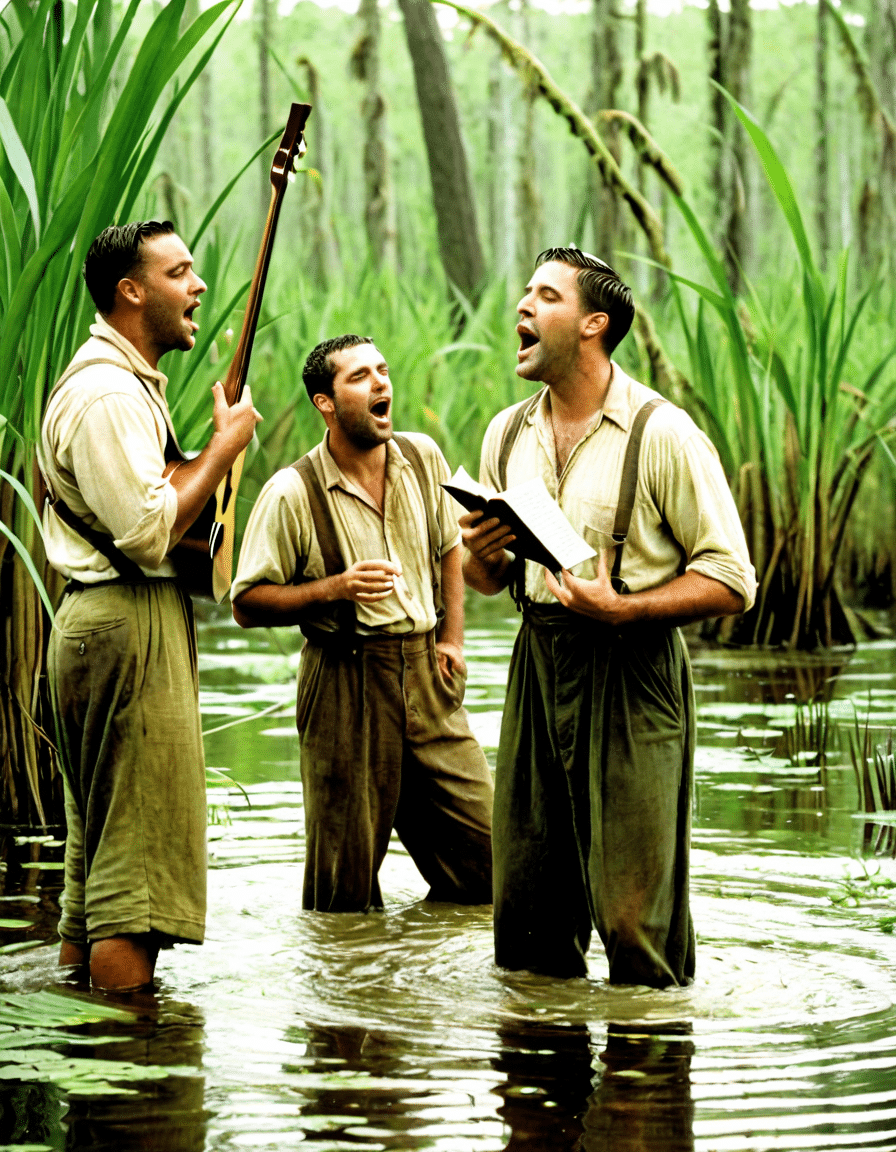In adapting a classic tale into a modern cinematic masterpiece, the Coen brothers’ film O Brother, Where Art Thou? (2000) elevates the essence of storytelling. It channels a multifaceted exploration of themes that resonate even as we stand in 2026. This article will take a deep dive into the film’s impact, its reflection on society, and its intersection with other cinematic narratives, such as Angel Has Fallen and Fly Me to the Moon, revealing how these themes continue to evolve.

7 Timeless Elements of O Brother, Where Art Thou? That Resonate Today
The film borrows cleverly from Homer’s Odyssey, presenting a narrative rich with adventure and existential inquiry. The timeless structure enables audiences to extract meaning beyond mere entertainment. The trials of Odysseus resonate today, reflecting contemporary struggles—kind of like daily life, where every setback feels like trying to escape from a tough spot!
The bluegrass and folk soundtrack is about more than just catchy tunes. Featuring artists like Alison Krauss and the Soggy Bottom Boys, it revitalizes interest in American roots music. This musical revival finds its modern counterpart in films like The Greatest Showman, which showcases how soundtracks can spark trends across generations.
Showcasing the social dynamics of 1930s America, the film invites reflection on race, class, and justice—issues that persist today. Much like the urgent conversations in The Hate U Give, it compels audiences to consider these ongoing societal challenges. O Brother, Where Art Thou? acts as a mirror, reflecting our current landscape while rooting deep in history.
The treacherous lawman symbolizes oppressive societal forces, much like the threats we see in Angel Has Fallen. Both films portray the nuanced struggle against corruption. This depiction of good versus evil showcases how these narratives echo our ongoing battles with authority figures, making the stakes feel all too real.
Pioneering digital color grading to create its signature sepia tone, O Brother, Where Art Thou? set a visual storytelling trend that resonates in cinema today. Modern films, like Dune, utilize rich color palettes, showcasing how aesthetic choices can elevate narratives. It’s fascinating to see such innovation then and now—it makes you appreciate the art form even more.
The bonds of friendship among the protagonists highlight the critical essence of camaraderie and loyalty. These themes strongly resonate in contemporary films like The Avengers, where teamwork allows for overcoming monstrous challenges. In a world that often feels divisive, these stories of togetherness remind us of the power we can find in shared experiences.
George Clooney’s Everett embodies a flawed hero on a journey of self-discovery. This shift in portraying heroism reflects the broader trend in cinema toward complex characters. Just like in Joker, audiences now crave depth in storytelling—characters who are relatable and, dare we say, human.

The Enduring Legacy of O Brother, Where Art Thou? and Its Cinematic Dialogues
As we reflect on how O Brother, Where Art Thou? intersects with modern films like Fly Me to the Moon, we recognize the persistent exploration of dreams, freedom, and existential quests. While Fly Me to the Moon presents these themes through a family-friendly lens, it echoes the adventure, hope, and pursuit of dreams that O Brother, Where Art Thou? so beautifully encapsulates. Both films show us that the journey is sometimes just as important as the destination—talk about deep, right?
O Brother, Where Art Thou? serves as a testament to storytelling’s power. The narrative not only transcends time but also waves through contemporary issues, influencing social perceptions. From the socio-political commentary embedded in the story to the musical revival it sparked, this film remains a cornerstone of modern cinema—a conversation starter that’ll linger long into the future.
In bridging past and present, O Brother, Where Art Thou? captures its core essence while allowing audiences to reflect on their own life adventures. It’s not just a film; it’s a captivating journey through time—a nostalgic ride that encourages us to ponder where we’ve been while looking ahead to what lies next. So grab the popcorn and settle in; this flick is one for the ages!
And as you reflect on its thematic richness, why not check out the fascinating meanings behind names like Hoda? Or get lost in the charm of Old House dreams, where nostalgia breathes new life into stories. It’s all connected, really—much like the adventures of our protagonists. Here’s to cinema—may it always inspire us to question, dream, and discover!
Fun Trivia and Interesting Facts About ‘O Brother Where Art Thou’
A Journey into the Past
Did you know that O Brother, Where Art Thou? draws inspiration from Homer’s epic, “The Odyssey”? The Coen Brothers put a quirky spin on this classic tale, making a modern homage set in the Deep South during the Great Depression. This setting brings to life a unique blend of adventure and comedy that captivates audiences. Moreover, George Clooney, who had just delivered stellar performances in films around that time, really leaned into the charismatic character of Ulysses Everett McGill, leading the charge alongside his companions. Speaking of captivating characters, keep an eye out for Lee Carters appearance, as it adds another layer to the movie’s rich tapestry.
Behind the Camera
It’s not just the story that made O Brother Where Art Thou? a standout; the film’s innovative sound design took a page from the past, featuring bluegrass and folk music that perfectly fit the era. The soundtrack was such a hit that it revived interest in traditional Americana music. And here’s something that might surprise you: the songs were so influential that they inspired contemporary artists! For instance, if you’re into modern productions, you might enjoy Jerry And Marge go large, where music continues to play a vital role. It’s amazing how certain films can echo through time, connecting different genres and generations.
A Fateful Cast
The casting choices in O Brother Where Art Thou? were a shrewd mix, including the ever-talented Tim Blake Nelson and John Turturro, known for their versatile roles. Turturro’s rendition of Pete adds a comedic yet poignant touch that balances the film’s themes wonderfully. Did you know that Jack Reynor, known for various roles, has often cited this film as one of his inspirations? And while you’re pondering film influences, don’t overlook the story of how Sig Mcx rifles made their way into popular media—sometimes movies and culture blend in ways we don’t expect.
All in all, O Brother Where Art Thou? showcases not just a thrilling narrative but also fascinating trivia and behind-the-scenes elements. From its literary roots to its rich auditory landscape, it’s a testament to storytelling that stands the test of time. So, as you embark on your journey with the film, keep these tidbits in mind, and you might see it in an entirely new light!




